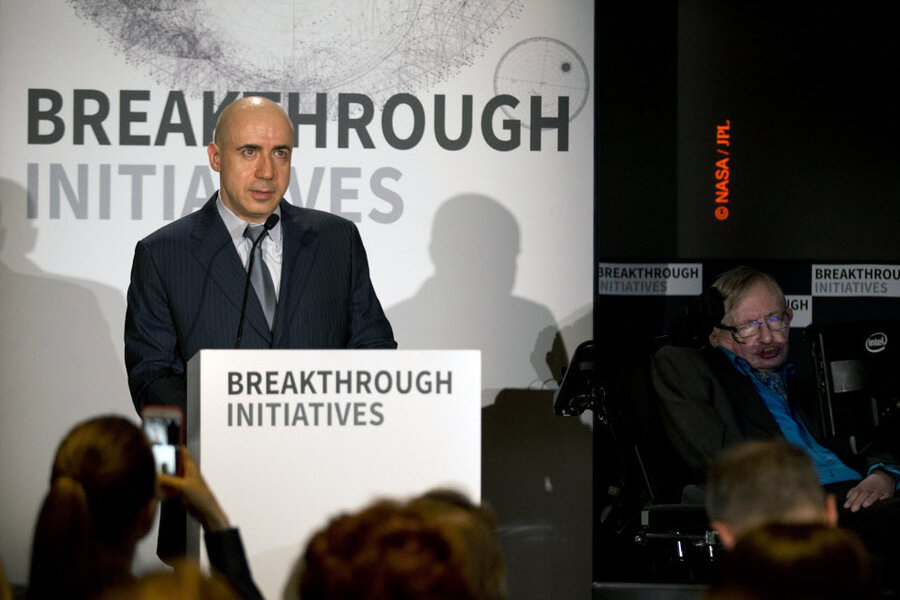Is there anybody out there? Quest for alien life gets $100 million boost
Loading...
While national governments focus on more modest and achievable goals in space – like guiding a small probe to a pseudoplanet 3 billion miles away – a Russian billionaire is focusing his attention on perhaps the toughest but most profound question in the cosmos: if other intelligent life exists somewhere in the universe.
Yuri Milner announced Monday that he plans to spend $100 million on a 10-year search for radio signals that could indicate the presence of intelligent life.
Mr. Milner – a physicist by training who abandoned a PhD at the Russian Academy of Sciences to pursue an MBA at the University of Pennsylvania's Wharton School of Business – said he’s been fascinated by the question of whether humans are alone in the universe since reading astrophysicist Carl Sagan’s “Intelligent Life in the Universe” as a 10-year-old in Moscow.
“It’s the most interesting technological question of our day,” he said in an interview with Reuters.
The funding for the project comes from his own personal wealth – the product of some savvy early investments in startups, including Facebook Inc., Twitter, and Groupon.
And the $100 million initiative – called Breakthrough Listen – will boost funding exponentially for the hitherto impoverished scientific search for extraterrestrial life.
The second largest project searching for extraterrestrial life – the Search for ExtraTerrestrial Intelligence, or SETI – spends less than $2 million a year. The SETI project has been on a shoestring budget for decades, often relying on private donations, including a recent $25 million contribution from Microsoft co-founder Paul Allen. The money was spent to build an advanced telescope array in California, but in 2011 a lack of funding meant that array had to be put “into hibernation,” according to Time Magazine.
This latest philanthropic outlay has alien-hunting scientists excited, not only because it’s so much money, but because the dollars can now go further thanks to advancements in technology. Scientists will now be able to monitor several billion radio frequencies at a time, instead of several million, and search 10 times more sky than in the early 1990s, when the SETI project was at its funding peak.
Astronomers will also be able to spend up to two months a year at some of world’s largest radio telescopes – such as the Parkes Observatory in Australia and the National Radio Astronomy Observatory in West Virginia. Scientists normally might be able to afford two days a year on the telescopes.
Milner told Reuters that the money should enable scientists to listen for radio transmissions in the Milky Way – Earth’s home galaxy – plus the 100 nearest galaxies.
Scientists involved in the initiative say its goal is less in analyzing and understanding signals they find than in simply establishing whether they were created by intelligent life or natural phenomena.
“It doesn’t tell you anything about the civilization, but it tells you a civilization is there,” said Frank Drake, an adviser to Breakthrough Listen, in an interview with Reuters.
Dr. Drake is one of an all-star team of scientists joining onto the initiative. The team will be include scientists such as Peter Worden, who was director of the NASA Ames Research Center until earlier this year. Stephen Hawking, the renowned physicist and author, holds an advisory role on the project.
Scientists believe that since humans have developed radio signaling it’s likely that others may use it as well.
The Breakthrough Listen team will organize the radio signals they find, examine it for patterns, and make the data public. The team will also hunt for light-based signals.
Milner believes that even if the project doesn’t find anything, that knowledge will be significant.
“If we’re alone, we need to cherish what we have,” he told Reuters. “The message is: the universe has no backup.”






